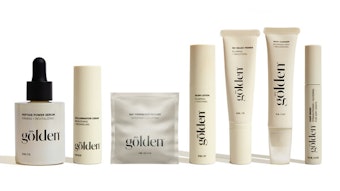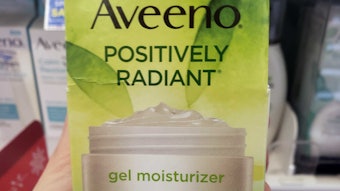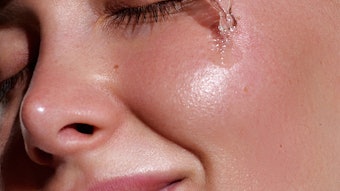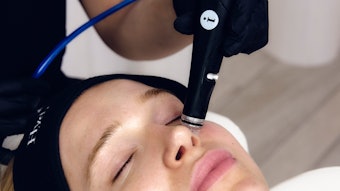
Skin imbalances ranging from sensitivity and redness to dryness and oiliness can be linked to several factors and require proper formulation. This article considers cleansing, treatment and makeup for oily, acne-prone and seborrheic skin and scalp.
Log in to view the full article
Skin imbalances ranging from sensitivity and redness to dryness and oiliness can be linked to several factors and require proper formulation. This article considers cleansing, treatment and makeup for oily, acne-prone and seborrheic skin and scalp.
Even healthy skin can be sensitive to stress, manifesting in redness, itching, blisters, scaling, etc. These issues in skin are warning signs and have many implications. For example, skin redness can be an indicator of not only excess sun exposure, but also a cleanser not being thoroughly rinsed off; or skin reacting to intense cold or dry air.
A strong emotion as well, acting on the peripheral vessels, can cause vasodilation, making one blush. The immediate consequences include:
- increased blood flow,
- reduced barrier function and
- greater sensitivity to irritants.
Cutaneous imbalances may also relate to a lack of hydration, causing excessive scaling and thickening ranging from dry skin to ichthyosis and psoriasis; or lipid excess – in order of severity from oily skin and seborrhea, to acne.
Mechanisms of Oily, Seborrheic and Acne-prone Skin
The sebum that covers and permeates the skin has many functions. Besides lubricating skin, it is known for mild connections with sexual attraction mechanisms and hair growth, and as a mild antiseptic. Several factors such as age influence sebum production, as sebum levels are usually low in childhood, rise in the middle-to-late teen years and remain stable into the seventh and eighth decades until endogenous androgen synthesis dwindles.1
Sebum production is also affected by one’s genetic background, diet, stress and hormone levels. Its distribution on the skin surface can be altered and, as noted, excessive – known as oily or seborrheic skin – commonly due to various physiological and pathological impulses, as well as chronological cycles. Under such conditions, inflammation and sebum degradation phenomena, known as acne, a true pathology, can co-exist.2
Oily skin forms through a multi-stage process, starting with the proliferation of sebaceous cells and the hyper-production of lipids within them, resulting in excess sebum flowing to the skin surface. This is followed by their release and accumulation in the sebaceous duct and hair follicle until they are discharged through the follicular duct and distributed on the stratum corneum.
However, excess sebum production is not the only cause. Sometimes, the composition of sebum is altered, e.g., richer in unsaturated lipids, causing increased fluidity and easy flow on the skin. Conversely, seborrheic skin, typical of mature individuals and pathological states known as seborrheic dermatitis, has a higher quantity of saturated lipids, solid at room temperature and waxy.
If either of these conditions of altered sebum composition are accompanied by impeded sebaceous flow (blocked follicles) and exaggerated bacterial growth, inflammatory states can occur.3
Mild Cleansing for Oily, Seborrheic and Acne-prone Skin
To cleanse skin in states of imbalance, various functional strategies can help to prevent irritative conditions, strengthen natural defenses, prepare the skin to improve pharmacological interventions and normalize the skin. There are also common mistakes worth noting that can worsen skin conditions.
Gentle cleansers and pH considerations: One mistake is degreasing the skin excessively with strong detergents and repeated washing. This can cause skin to respond by producing additional sebum. Oily skin is particularly delicate and requires mild cleansers, used in minimal amounts and diluted in lukewarm water – never hot and ideally, demineralized.
Also, in acne-prone young adults, washing facial skin with an alkaline cleansing agent has been shown to cause more inflammatory reaction than acidic syndet bars.4 Synthetic detergents with a pH similar to that of the skin’s surface caused less skin reaction5 and in addition, temporary changes in skin’s pH were limited to the top layers of the stratum corneum.6
Among the ideal ingredients for cleansing compositions are sulfosuccinates, which produce foam quickly without excessive rubbing; amphoteric surfactants (coco-amphoglycinates); taurates and isethionates, which can be formulated at a pH similar to that of the skin, respecting its balance.
Hard water: Interestingly, one study has shown that calcium salts in hard water can have a slightly irritating effect to skin. This can be aggravated by chlorine traces used to sterilize water in aqueducts and pools, and further worsened by chlorinated compounds that constitute partial oxidation products of organic impurities (chlorophenols).7, 8 Skin affected by these factors and experiencing itch after washing with tap water can be improved by further rinsing with distilled, mineral or thermal water.
Antibacterial effects: In the presence of acne phenomena, washing must keep the surface bacterial and fungal load under control. Here, the use of cleansing products with good antibacterial effects becomes indispensable. Notably, a strong correlation has been identified between the pH of skin and bacterial count.
Formula 1 gives the example of a mild skin cleanser that uses the primary surfactant zinc coceth sulfate to reduce irritative states while also respecting the hydrolipidic film. This ingredient is combined with surfactants whose fatty chains, respectively undecylenic and caprylic, have high antibacterial power.
Zinc possesses anti-inflammatory properties and aids in wound healing.9, 10 Moreover, Zn2+ ions exhibit antimicrobial activities across various spectra.11 In this formula, the sebum-normalizing effects are enhanced by azeloglycine.
It is important to note that when amphoteric co-detergents with mild cleansing effects are used, nonionic surfactants should be avoided since they can worsen the composition of the skin's lipid content.12
Treating Seborrheic Scalp
Seborrhea also often affects the scalp. Coined seborrheic dermatitis in pathological cases when accompanied by permanent irritative states, this condition refers to the accumulation of oxidized lipids and abundant scaly or greasy desquamation of the scalp. In such cases, cleansing must be especially gentle but should efficiently remove desquamating cells and the altered lipids accompanying them.
Formula 2 shows a shampoo for greasy scalp offering a mild keratolytic effect thanks to a high-concentration salicylic acid. This is combined with a micro-emulsified synthetic hydrocarbon oil, for emollient and solubilizing effects, and a mild surfactant mixture similar to that of the mild skin cleanser described above but in this case, featuring magnesium laureth sulfate and sodium sulfosuccinate.
Retinoids and More for Oily and Acne-prone Skin
A few different approaches are taken to help treat seborrheic and acne-prone skin. Normalizing skin is one, which includes the use of ingredie¬nts such as glycyrrhetinic acid, allantoin, zinc oxide and plant extracts with soothing properties. Prevention is another approach, helped by avoiding occlusive creams and instead choosing moisturizing and anti-redness treatments.
Retinoids: The main ingredients entrusted for anti-acne efficacy are retinoids combined with retinoid-like enhancing substances. Topical retinoids work by normalizing keratinization, creating an aerobic condition that is unsuitable for the proliferation of Propionibacterium acnes and reducing the inflammatory response. Additionally, they stimulate the proliferation of fibroblasts and the production of extracellular matrix components including fibronectin, laminin and thrombospondin.13, 14
Retinoid-like substances: Retinoid-like substances modulate the activation of genes involved in the inflammatory processes of acne, similar to retinol. Current examples on the market include retinol; retinaldehyde, with fewer side effects than retinol; and various retinol esters such as: retinyl acetate, retinyl propionate, retinyl retinoate, hydroxypinacolone retinoate and retinyl palmitate, which has greater stability and fewer side effects than retinol. Indeed, several raw materials are available that contain retinol in liposomal or micro-encapsulated form to reduce its instability and irritating power and improve its epidermal absorption.
Combined approach: The combination of a retinoid with a retinoid-like substance is an interesting strategy to reduce irritation and increase the efficacy of the treatment. One example is bakuchiol, a plant-derived monoterpene with antioxidant activity that has an excellent toxicological profile and is free from the typical side effects of retinol.
Bakuchiol: Bakuchiol can stabilize retinol and inhibit lipid peroxidation, maintaining the integrity of skin lipids. It reduces the expression of 5-α reductase and exerts anti-inflammatory action by inhibiting pro-inflammatory enzymes. It also has broad-spectrum antibacterial and antifungal activity, particularly against P. acnes. Tested in vivo at 1%, bakuchiol has shown significant improvement in acne-affected skin in terms of reducing comedones, erythema and itch.15
Additional actives offering sebum-regulating, keratolytic, antibacterial and antioxidant activities include potassium azeloyl diglycinate and zinc pyrrolidone carboxylic acid (PCA). The latter is a derivative of PCA, a natural constituent of the skin's natural moisturizing factor (NMF), that provides a feeling of freshness and has a conditioning effect. As mentioned, the trace element zinc also has antibacterial and anti-acne activity.
Allantoin: Allantoin is also known for eliminating desquamating cells and having a keratoplastic effect. Applied topically, it is effective at low percentages, aiding in skin’s repair processes by promoting cell proliferation, soothing mild irritative states and imparting re-epithelialization effects in small superficial injuries.
Niacinamide: Niacinamide, an amide of nicotinic acid, also known as vitamin B3 or PP, has antioxidant, moisturizing and microcirculation-stimulating action. It can promote the synthesis of collagen, ceramides and keratin in the stratum corneum. Several studies have shown its activity in reducing sebum production and depigmenting skin spots, making it a strategic ingredient for oily skin with residual hyperpigmentation spots from acne manifestations.16
Soothing extracts: Extracts from Centella asiatica containing the triterpenes asiaticoside and madecassoside have soothing, anti-inflammatory and healing properties. They can promote the synthesis of types I and III collagen.
Peptides: The use of peptides can also improve skin condition. Liposomal oligopeptide-24, for example, stimulates the growth of keratinocytes and fibroblasts and the synthesis of hyaluronic acid and elastin, as well as inhibits the expression of pro-inflammatory molecules (COX-2 and IL-1β). It also can stimulate the synthesis of aquaporin-3 in keratinocytes, increasing water and glycerin transport into the stratum corneum.17
Fillers: Finally, the addition of an appropriate filler capable of absorbing and retaining sebum allows for a mattifying effect and a dry skin feel.
Formula 3 provides an example of an acne-prone skin treatment.
Makeup for Seborrheic Skin
Lastly, it is possible to design makeup for seborrheic skin by using products such as light powders with synthetic binders and absorbent ingredients, and avoiding long-lasting, waxy and comedogenic products. Formula 4 provides an example.
Here, butyloctyl salicylate and dimethicone act as binders for the powders. Fillers made of nylon-12, mica and kaolin help to reduce the oiliness of the skin and offer a matte finish. Furthermore, the amount of beeswax (Cera alba) is very low.
Oil considerations: Oils in pigmented emulsions require greater attention. Branched chain iso-esters should be avoided or used at small percentages due to excessive shine. Silicones are a good choice for various reasons: they are inert, non-comedogenic and non-occlusive; moreover, they improve the light feeling on the skin, especially the volatile silicones.
Conclusions
Managing oily, seborrheic and acne-prone skin or scalp requires a delicate and careful approach. Mild cleansers should have a pH similar to that of the skin and contain antibacterial and soothing active ingredients. Treatments for seborrheic scalp should additionally include mild keratolytic ingredients.
Cosmetic treatments should include sebum- and keratinization-normalizing substances like retinoids and similar actives, such as bakuchiol, in addition to niacinamide, allantoin, zinc salts and botanical extracts with anti-inflammatory and anti-redness activities.
Makeup products must additionally contain absorbent powders, avoid occlusive and waxy ingredients, and give a matte finish to the skin.
Despite all the challenges that can arise from the different formulative tasks, proper care products can significantly improve skin’s condition and prevent future complications.
References
1. Pochi, P.E., Strauss, J.S. and Downing, D.T. (1979). Age-related changes in sebaceous gland activity. J Invest Dermatol. Available at https://pubmed.ncbi.nlm.nih.gov/448169/
2. Thiboutot, D. (2004). Regulation of human sebaceous glands. J Invest Dermatol. Available at https://pubmed.ncbi.nlm.nih.gov/15191536/
3. Elias, P.M. (2005). Stratum corneum defensive functions: An integrated view. J Invest Dermatol. Available at https://www.sciencedirect.com/science/article/pii/S0022202X15323939
4. Korting, H.C. and Bruan-Falco, O. (1996). The effect of detergents on skin pH and its consequences. Clin Dermatol. Available at https://pubmed.ncbi.nlm.nih.gov/8901395/
5. Barel, A.O., Lambrecht, R., Clarys, P., et al. (2001). A comparative study of the effects on the skin of a classical bar soap and a syndet cleansing bar in normal use conditions and in soap chamber test. Skin Res Technol. Available at https://pubmed.ncbi.nlm.nih.gov/11393212/
6. Parra, J.L. and Paye, M. (2003). EEMCO guidance for the in vivo assessment of skin surface pH. Skin Pharmacol. Available at https://pubmed.ncbi.nlm.nih.gov/12677099/
7. Warren, R., Ertel, K.D., Bartolo, RG., Levine, MJ., Bryant, P.B. and Wong, LF. (1996). The influence of hard water (calcium) and surfactants on irritant contact dermatitis. Contact Dermatitis. Available at https://pubmed.ncbi.nlm.nih.gov/9118628/
8. Perkin, M.R., Craven, J., Logan, K., et al. (2016). Association between domestic water hardness, chlorine, and atopic dermatitis risk in early life: a population‐based cross‐sectional study. J Allergy Clin Immunol. Available at https://pubmed.ncbi.nlm.nih.gov/27241890/
9. Bao, B., Prasad, A.S., ... Swerdlow, P., et al. (2008). Zinc supplementation decreases oxidative stress, incidence of infection and generation of inflammatory cytokines in sickle cell disease patients. Transl. Res. Available at https://pubmed.ncbi.nlm.nih.gov/18674741/
10. Xiang, Y., Zhou, Q., ... Wu, S., et al. (2020). A Z-scheme heterojunction of ZnO/CDots/C3N4 for strengthened photoresponsive bacteria-killing and acceleration of wound healing. J Mater Sci Technol. Available at https://www.sciencedirect.com/science/article/abs/pii/S100503022030462X
11. Pasquet, J., Chevalier, Y., Pelletier, J., Couval, E., Bouvier, D. and Bolzinger, M.A. (2014). The contribution of zinc ions to the antimicrobial activity of zinc oxide. Colloids Surf. Available at https://www.sciencedirect.com/science/article/abs/pii/S0927775714005172
12. Ananthapadmanabhan, K.P., et al. (2009). A novel technology in mild and moisturizing cleansing liquids. Cosmetic Dermatology. Available at https://www.researchgate.net/publication/265205047_A_Novel_Technology_in_Mild_and_Moisturizing_Cleansing_Liquids
13. Millikan, L.E. (2003). The rationale for using a topical retinoid for inflammatory acne. Am J Clin Dermatol. Available at https://pubmed.ncbi.nlm.nih.gov/12553848/
14. Varani, J. (1998). Preservation of human skin structure and function in organ culture - Invited review. Histol Histopathol. Available at https://pubmed.ncbi.nlm.nih.gov/9690135/
15. Puyana, C., Chandan, N. and Tsoukas, M. (2022). Applications of bakuchiol in dermatology: Systematic review of the literature. J Cosmet Dermatol. Available at https://pubmed.ncbi.nlm.nih.gov/36176207/
16. Draelos, Z.D., Matsubara, A. and Smiles, K. (2006). The effect of 2% niacinamide on facial sebum production. J Cosmet Laser Ther. Available at https://pubmed.ncbi.nlm.nih.gov/16766489/
17. Harder, J., Tsuruta, D., Murakami, M. and Kurokawa, I. (2013). What is the role of antimicrobial peptides (AMP) in acne vulgaris? Exp Dermatol. Available at https://pubmed.ncbi.nlm.nih.gov/23711061/










